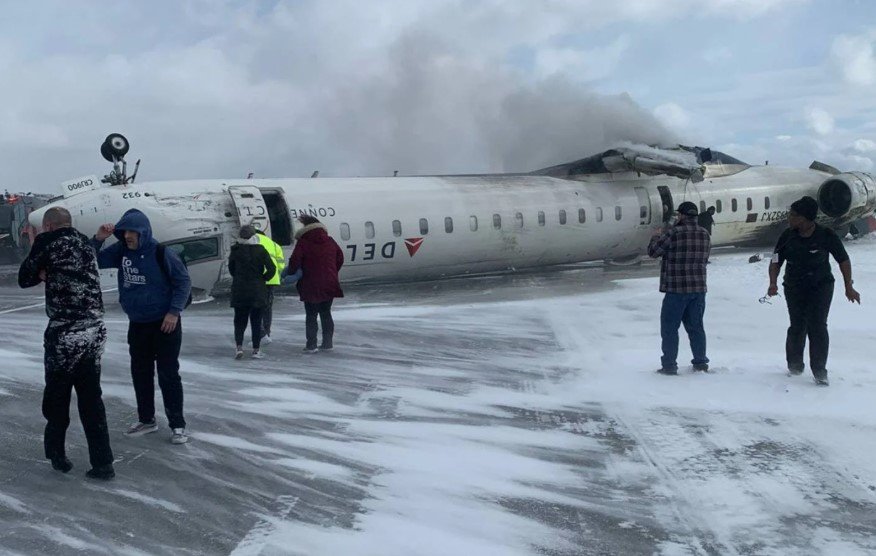On a snowy afternoon at Toronto Pearson International Airport (YYZ), Delta Air Lines flight 4819—a Bombardier CRJ regional jet—found itself in a high-stakes landing situation. What should have been routine turned into a hard landing, with strong winds, snow-covered runways, and limited stopping distance adding to the challenge. Fortunately, no injuries were reported, and the incident serves as yet another testament to pilot expertise and modern aviation safety measures.
A Rough Approach With Little Margin For Error
Delta 4819 was nearing its destination under difficult weather conditions. Snow blanketed the airport, reducing visibility and making braking effectiveness questionable. Runway friction was lower than usual, an issue that can quickly turn minor miscalculations into dangerous situations.
As the aircraft descended, crosswinds and gusty conditions complicated the approach. Wind direction and speed were unpredictable, forcing the pilots to make constant adjustments. On top of that, a possible tailwind component may have caused the plane to float longer before touchdown, limiting available runway space for a smooth stop.

Why Did The Landing Turn Hard?
There’s rarely one single reason behind a hard landing. Instead, it’s often a combination of factors:
- Inadequate Flare-Out: The flare is the final maneuver before touchdown, where pilots slightly raise the aircraft’s nose to reduce the descent rate. If mistimed or too shallow, the plane can hit the runway with excessive force.
- Crosswinds & Gusts: These require precise control inputs, and sudden wind shifts can destabilize an aircraft at a crucial moment.
- Reduced Braking Action: Snow and ice contamination on the runway limited how effectively the aircraft could slow down, increasing the risk of a runway overrun.
- Shorter Available Runway: The specific conditions at the time meant there was little room for any extra floating or late braking.
How Snow Actually Helped Save The Day
While the snowfall was a primary factor in making the landing difficult, it also contributed to a safer outcome. The accumulation of snow on the runway helped absorb some of the landing force, reducing the impact stress on the aircraft.
Additionally, modern aviation safety systems played a critical role:
- Aircraft Design: The Bombardier CRJ is built to handle firm landings within operational limits.
- Crew Training: Pilots undergo extensive training for winter landings, preparing them for high-pressure moments like this one.
- Airport Response: Emergency teams were on standby, ensuring a swift response in case of further complications.
Lessons From The Incident
Hard landings happen, and while they’re not ideal, they aren’t necessarily dangerous. This event at Toronto Pearson highlights key takeaways for aviation safety:
- Weather Can Shift Fast: Even with thorough pre-flight planning, pilots must be ready to adapt to changing conditions.
- Runway Conditions Matter: Snow and ice can dramatically affect braking distances, making precise landings essential.
- Pilot Training Is Critical: The expertise of flight crews often makes the difference between a rough landing and a disaster.
While passengers may have experienced a jarring touchdown, the incident was ultimately a reminder of aviation’s built-in safety mechanisms. It could have been worse, but thanks to skilled pilots and well-engineered aircraft, everyone walked away safely.
